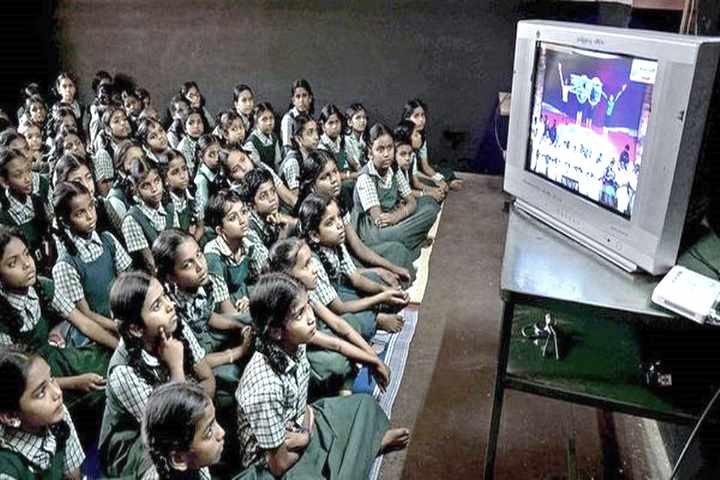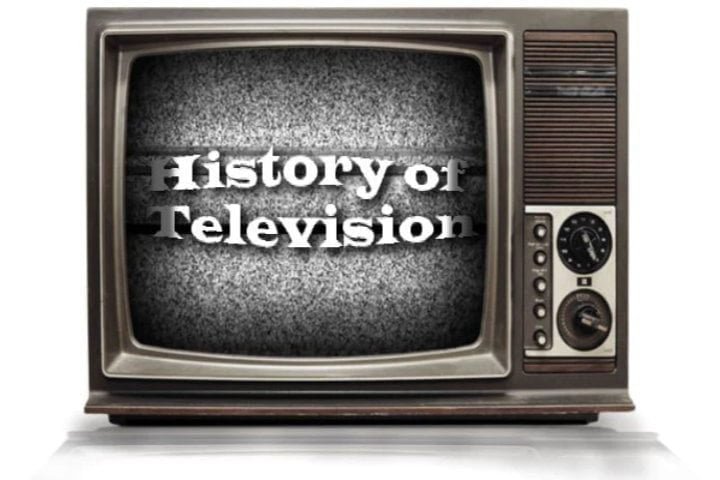- Characteristics of Television: A Powerful Medium with far-reaching Impact
- History of Television
- Television in India: Once an Idiot Box becomes 24×7 Companion
- Exploring the Television Transmission Systems: From Analog to Digital and Beyond
Characteristics of Television
Television is one of the most powerful and influential media of our time. It has the ability to reach a vast audience and shape our perceptions of the world around us. Television can inform, educate, and entertain, but it can also be used to manipulate and control.
In This Article
Television has both positive and negative impacts on society. Different characteristics of television make it such a powerful medium and make it a powerful force to influence our culture, our values, and our way of life.
An audio-visual medium


One of the most distinctive features of television is its ability to combine sound and sight. This makes television a much more immersive and engaging medium than other forms of media, such as radio or print.
Television is a medium that delivers an array of sensory information to us. It provides visual images, auditory sounds, and often emotional connections to the characters we see on the screen. As a result, this powerful combination of stimuli can profoundly impact our minds and emotions.
Features of other media
Television did not evolve independently but drew inspiration from other mediums, borrowing essential elements such as movement from the stage, the film camera, and the radio microphone. By combining these diverse components, television has become a uniquely innovative medium that continues to adapt to the needs of modern audiences. This amalgamation of influences has resulted in a dynamic and versatile platform that constantly evolves to meet the demands of its viewers.
Broad reach and high credibility
It’s a supreme medium of mass communication that has turned the world into a global village. It has turned our society into an information society. It has widened man’s mental horizon by humanizing knowledge and making them feel like citizens of the world. Its credibility lies in the fact that seeing is believing.
As per the FICCI & EY report on India’s media & entertainment sector released in April 2023, there were 120 million active pay TV homes and 45 million free homes in India. There are also 25 million Smart TV sets, of which 8 to 10 million are connected to the internet daily.
Because of its reach and believability, television has become a powerful medium for projecting the world of politics, sports, arts, personalities, events, and ideas.
A medium of the close-up


The size of the television screen makes it ideal for close-ups of human faces, expressions, reactions, and interactions between individuals. It presents interviews, discussions, and in-depth examinations of human emotions and relationships. This close-up perspective offers an intimacy that few other mediums can match.
A democratizing force
One of the most significant strengths of television lies in its democratizing nature. It is accessible to people from all walks of life, going beyond boundaries and catering to diverse sections of society.
Television plays a significant role in politics. Politicians use television to communicate with voters and promote their campaigns. News coverage of elections can also influence voters’ opinions. It can be used to promote social and political change.
Most television programs are created with the common man in mind, making it an inclusive medium that disseminates information, informal education, and literature to a broad audience.
Television can also be used to significant effect to educate and inform viewers. Documentary programs and news broadcasts provide insights into different cultures and perspectives and help stay informed about current events. This is one of the important characteristics of television.
A living room medium


Television is more than just a screen; it is a medium designed for and around the family. Watching television often brings family members together, providing a shared experience and a platform for bonding. In many ways, it has become the centerpiece of our living rooms, facilitating family time and discussions.
A glamorous medium
Television often portrays a glamorous and idealized world filled with celebrities, fashion shows, and luxurious lifestyles. By showcasing the glitz and glamour of the world on the small screen, television has earned the title “the magic box.”
A medium of Immediacy


Television stands as the supreme reporter of our times. It can capture events unfolding, providing viewers a real-time connection to the world.
Operating within fixed-time units, television demands discipline from performers, scriptwriters, and producers, ensuring that content is delivered promptly and accurately.
Advertisers Influence
In the modern era, television has emerged as a potent sales platform. Businesses leverage television to market their products and services, reaching out to a vast and diverse audience of potential and existing customers.
Television viewers are more likely to be persuaded by advertising messages than viewers of other media. This is because television advertising can use sight and sound to create a more robust and memorable impact.
Television remains a crucial part of the advertising ecosystem, often working in tandem with digital and print media to create comprehensive marketing campaigns.
Negative Impacts of Television


Television can also have several negative impacts on society. It can:
- Promote unrealistic expectations and lead to feelings of dissatisfaction with one’s own life
- Increase violence and aggression
- Leads to addiction and social isolation
- Promote unhealthy lifestyles and eating habits
- Negatively impact children’s development
Characteristics of Mass Media and Television’s Role
Television plays a pivotal role in the broader ecosystem of mass media. Its relationship with other media forms is both complementary and competitive. To better understand television’s place in the media landscape, let’s examine the broader characteristics of mass media and how television embodies these traits:
- Wide Reach: Like other forms of mass media, television can reach a large audience simultaneously. Popular TV shows and events can draw millions of viewers at once. Many TV shows and news programs now extend their reach through social media, websites, and mobile apps, creating a multi-platform media experience.
- Accessibility: With the rise of smart TVs and streaming services, television is increasingly converging with digital media, offering interactive and on-demand content. Television is easily accessible to a diverse range of people, regardless of their educational background or socioeconomic status. This accessibility is a key characteristic of mass media.
- Uniformity of Message: Television allows for the delivery of a uniform message to a large audience, ensuring consistency in the information or entertainment provided. Television often sets the agenda for other media forms. Newspapers, radio, and online platforms frequently pick up news stories that break on TV.
- Rapid Dissemination: Television can quickly spread news and information, making it an essential tool for real-time updates and emergency communications.
- Cost-Effectiveness: While production costs can be high, the cost per viewer for television content is relatively low due to its wide reach, making it an efficient medium for mass communication.
- Feedback Mechanism: Modern television, especially with the integration of social media, allows for audience feedback and interaction, a crucial aspect of contemporary mass media.
- Cultural Influence: Television, like other mass media, significantly impacts cultural norms, values, and trends.
Television in Communication
Television’s role in communication extends beyond mere broadcasting:
- Visual Storytelling: Television is a medium that enables the telling of intricate stories through the use of visuals, dialogue, and sound.
- Non-verbal Communication: The use of close-ups and body language on TV effectively conveys emotions and subtleties that may not be as apparent in other forms of media.
- Mass Public Address: Government officials and leaders frequently communicate with the nation through television, particularly during times of crisis or significant events.
- Cultural Communication: Television shows and advertisements significantly impact cultural norms and values, both reflecting and shaping them.
- Interactive Communication: Television is becoming more interactive with the integration of social media and live polling, allowing for a more engaging and dynamic form of communication.
Features of a TV: Technical Aspects


While we’ve discussed the characteristics of television as a medium, it’s also worth noting the features of modern TV sets that enhance the viewing experience:
- High Definition and 4K Resolution: With the latest technological advancements, modern TVs now provide an unparalleled level of picture quality that truly enhances the viewing experience. The clarity and sharpness of the visuals are so remarkable that they create a more immersive atmosphere for the viewers.
- Smart TV Capabilities: Numerous televisions now offer integrated internet connectivity and a wide range of applications, blurring the distinction between conventional television and online streaming.
- Enhanced TV Experience: Advanced TVs come with the convenience of voice control, enabling users to effortlessly change channels, adjust volume, or search for content using simple voice commands.
- Various Connectivity Options: The TV screen offers multiple ways to connect, including HDMI ports, USB slots, and wireless connectivity options, providing versatility in its use.
- Energy Efficiency: Many modern TVs are designed to be energy-efficient, addressing environmental concerns.
- Improved Audio: Surround sound and Dolby Atmos enhance the audio experience for a more immersive feel.
Use of Television: Beyond Entertainment


While entertainment is a primary function, television serves various other purposes:
- News and Information: Television remains a primary source of news for many, providing real-time updates on local, national, and international events.
- Education: Educational programs and channels catering to students of all ages and supplement formal education is an important characteristics of television. Programs like “Gyan Darshan” and other educational channels have been instrumental in spreading knowledge, especially in rural areas.
- Public Awareness: Television is often used to disseminate important information, as seen during the COVID-19 pandemic. Shows like “Satyamev Jayate” have highlighted social issues and sparked conversations about societal problems, leading to positive changes.
- Cultural Exchange: Television plays a crucial role in preserving and promoting various regional cultures through programs in different languages and about diverse traditions.
- Social Connectivity: Shared viewing experiences, especially of major events, create a sense of community and shared culture.
- Employment and Skill: The television industry in India is a significant employer and contributor to the economy, from content production to distribution and advertising. Cooking shows, DIY programs, and other instructional content can help viewers learn new skills.
- Political Engagement: During elections, television becomes a primary source of information and debate, influencing political discourse and voter awareness.
Conclusion
Television is a powerful medium that can have a significant impact on society. It is essential to be aware of television’s positive and negative impacts. Television can also be addictive. Excessive television viewing can lead to obesity, sleep deprivation, and other health problems. Television can also be used to manipulate and control people. For example, political propaganda and advertising can persuade people’s opinions and beliefs.
To reduce the adverse effects of television, it’s essential to limit the time we spend watching it. We should choose entertaining and informative programs and question the messages we are presented with. As consumers of television content, we have the responsibility to be critical viewers, understanding the medium’s power and its potential influences on our thoughts and behaviors.





Hi can I have your number and age